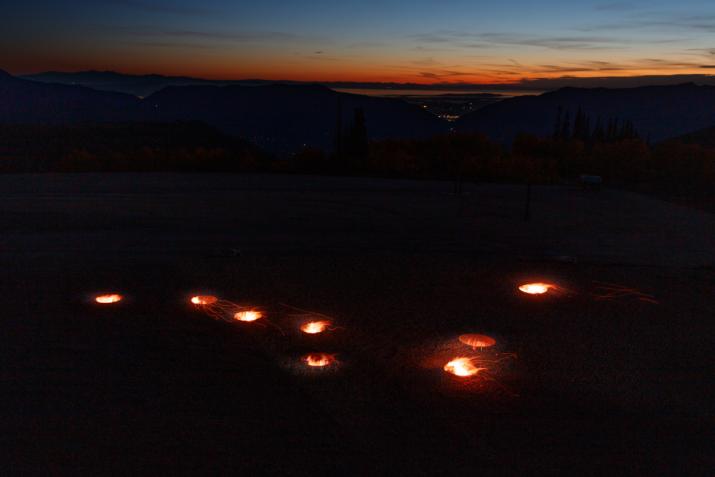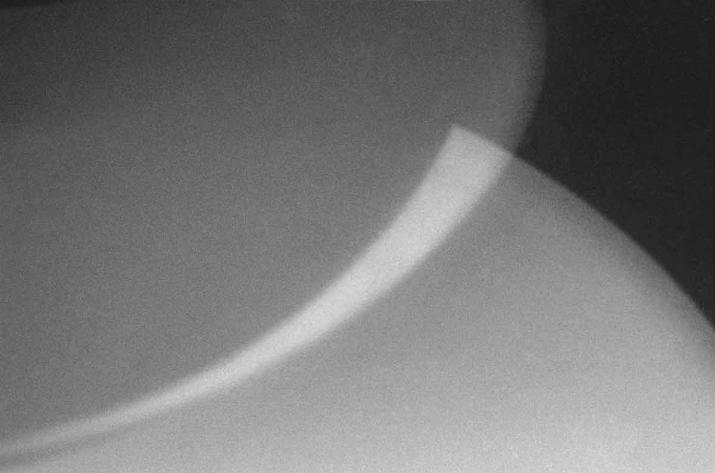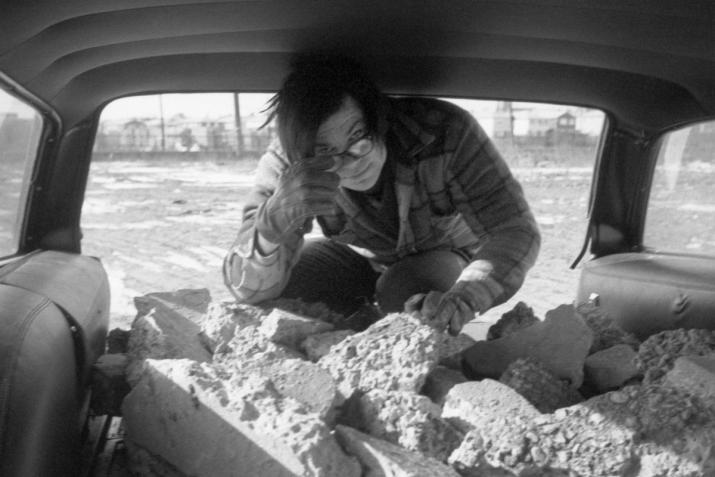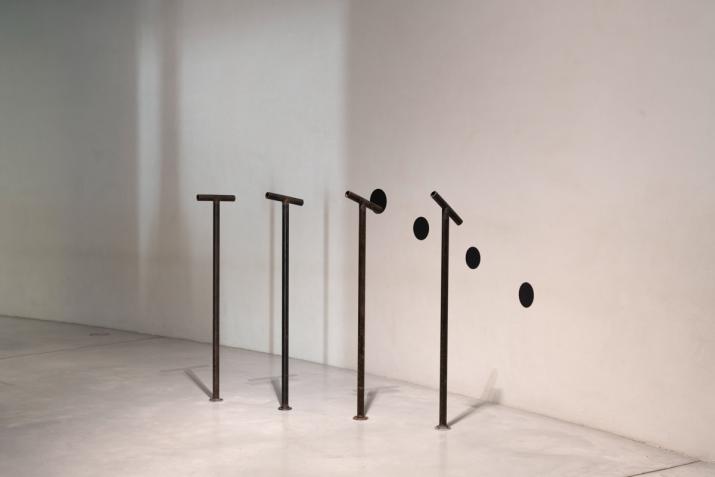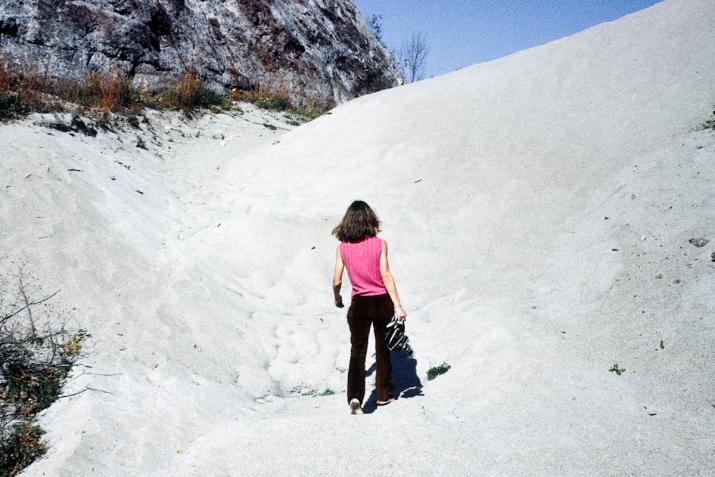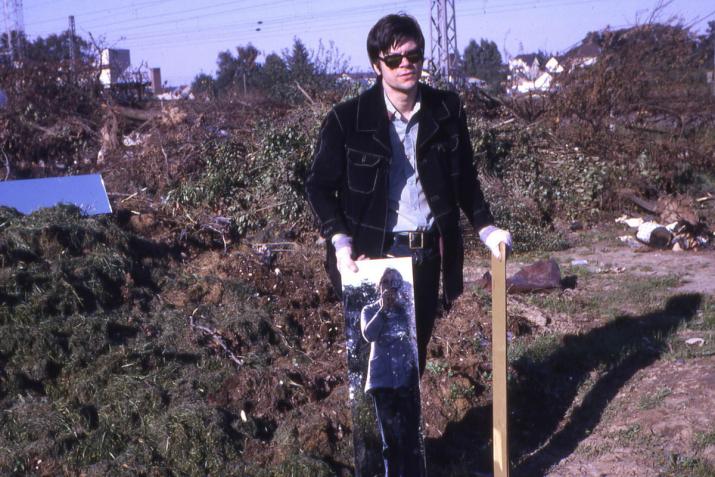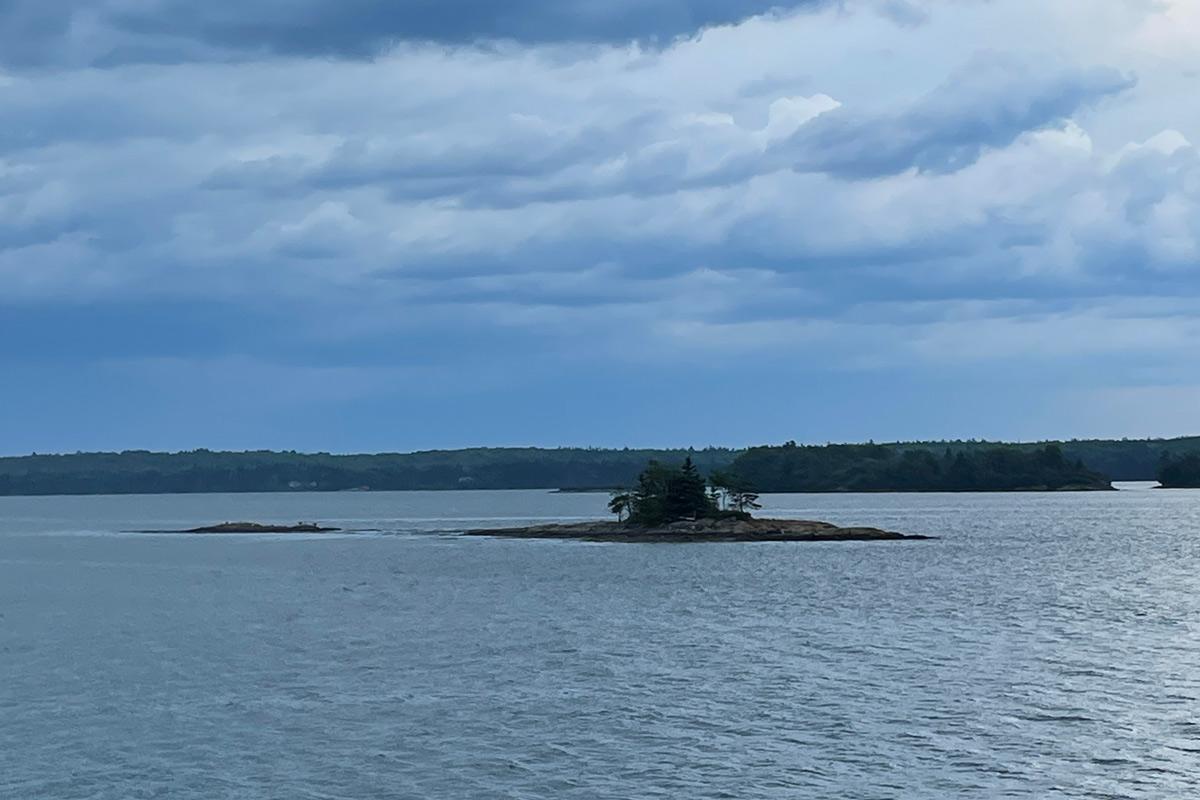

The Island Project: Point of Departure
Holt/Smithson Foundation is delighted to announce details of its first artist commission. The Island Project: Point of Departure invites Tacita Dean, Renée Green, Sky Hopinka, Joan Jonas, and Oscar Santillán to develop proposals responding to an island in Maine that was purchased sight-unseen by Nancy Holt and Robert Smithson on September 30, 1971.
At the mercy of the weather and rising sea levels, Little Fort Island is a small coastal island outside of Harrington, Maine that palpably demonstrates the changing state of our planet. Smithson made two drawings outlining potential projects for the island before visiting. When he arrived at Little Fort Island in 1972, Smithson decided not to proceed with the meandering earthwork proposals as he felt the landscape was too picturesque.
In the spirit of Nancy Holt and Robert Smithson, The Island Project sets out to develop innovative ways of exploring our relationship with the planet. The five invited artists will think with Holt/Smithson Foundation on and off location to consider how this island site can be a point of departure to generate ideas, raise questions, and inspire artworks. The resultant artworks might be a film, a soundscape, an unrealized proposal, a text, a sculpture, a performance, a radio broadcast, a digital project, a series of photographs, a suite of drawings, or something yet to be defined. The artworks might be experienced on-site, off-site, with partner museums, as broadcasts, as publications, with local partners: the location will be defined by each artist. The Island Project will develop over time, led by research and experiment, coming to fruition over the next five years.
Lisa Le Feuvre, Executive Director of Holt/Smithson Foundation, says, “Nancy Holt and Robert Smithson transformed the world of art and ideas. Since our inception, working with artists has been at the heart of Holt/Smithson Foundation’s activities. We are honored Tacita, Renée, Sky, Joan, and Oscar will be thinking with us over the coming years about Little Fort Island, and we are immensely looking forward to learning with them. These five artists open Holt and Smithson’s ideas to the present, sharing a commitment to generative research. Islands are special places whose edges are never at rest; they are sites for the imagination and tangible locations with distinct biographies.”
Click here to read more about The Island Project by Hilarie M. Sheets in The Art Newspaper.
Artist Selection Process:
Holt/Smithson Foundation worked with an external Nomination Panel to select the artists for the Island Project. The external members of the Nomination Panel were Ulisses Carrilho, Aaron Cezar, Katya Garcia Anton, Paul Ha, Sohrab Mohebbi, Simon Njami, Sharmini Pereira, Griselda Pollock, Magda Radu, Ryan Rice, Gabriela Salgado, Chris Taylor, and Gaëtane Verna.
Tacita Dean (born 1965, UK) lives and works in Berlin. Working primarily in film, Dean explores the conditions of chance, chaos, and contingency. Dean has been the recipient of numerous prizes including the Cherry Kearton Medal and Award, Royal Geographical Society; Robson Orr Ten Ten Award: A Government Art Collection/Outset Annual Commission; the Kurt Schwitters Prize; the Hugo Boss Prize at the Solomon R. Guggenheim Museum, New York; and the Sixth Benesse Prize at the 51st Venice Biennale. Solo exhibitions were recently held at Glenstone Museum; Ny Carlsberg Glyptotek, Copenhagen; Moody Center for the Arts, Houston; Serralves Museum, Porto; Kunsthaus Bregenz, Austria; The Fruitmarket Gallery, Edinburgh; and The Royal Academy of Arts (London), as part of a trilogy of exhibitions held in conjunction with the city’s National Gallery, and National Portrait Gallery.
Learn more about Dean here.
Renée Green (born 1959, Cleveland, OH) is an artist, writer, and filmmaker known for her highly layered and formally complex multimedia installations in which ideas, perception, and experience are examined from myriad perspectives. Her work engages with investigations into circuits of relation and exchange over time, the gaps and shifts in what survives in public and private memories, as well as what has been imagined and invented. Green’s exhibitions, videos and films have been seen throughout the world in museums and art institutions, among them MAK Center for Art + Architecture at the Schindler House, Museum of Contemporary Art and UCLA Hammer Museum (Los Angeles); Museum of Modern Art, Whitney Museum of American Art, International Center of Photography and the New Museum (New York); Jeu de Paume and Centre Georges Pompidou (Paris); Carpenter Center for Visual Arts at Harvard University (Cambridge, Mass.); Musée cantonal des Beaux Arts, Lausanne; Yerba Buena Center for the Arts (San Francisco); National Maritime Museum (London); and MACBA, Barcelona. Her work has also been present at the Whitney, Venice, Johannesburg, Kwangju, Berlin, Sevilla and Istanbul Biennials, as well as in Documenta 11 and Manifesta 7. Her most recent books include Pacing (2020, CCVA, FAM, Cambridge, Mass.), Other Planes of There: Selected Writings (2014, Duke University Press, Durham), and Endless Dreams and Time-Based Streams (2010, Yerba Buena Center for the Arts, San Francisco). Green is a Professor at the MIT Program in Art, Culture and Technology, School of Architecture & Planning.
Learn more about Green here.
Sky Hopinka (born 1984, Ho-Chunk Nation/Pechanga Band of Luiseño Indians) works in video, photography, and text to explore personal positions of Indigenous homeland and landscape, and how language operates as a container of culture. He engages with place by asking who lives now here and who lived here before, Hopinka explores what it means to be a guest in a landscape. Born and raised in Ferndale, Washington Hopinka has lived in Palm Springs and Riverside in California; Portland, Oregon; and Milwaukee, Wisconsin. In Portland he studied and taught chinuk wawa, a language indigenous to the Lower Columbia River Basin. In 2020 his solo exhibition Centers of Somewhere launched at CCS Bard, and he has previously exhibited at the 2018 FRONT Triennial; the 2017 Whitney Biennial; the 2016 Wisconsin Triennial; and was a guest curator at the 2019 Whitney Biennial. His films have played at various festivals including ImagineNATIVE Media + Arts Festival; Images; Wavelengths; Ann Arbor Film Festival; Sundance; and Projections. Hopinka was awarded jury prizes at the Onion City Film Festival; the More with Less Award at the 2016 Images Festival; the Tom Berman Award for Most Promising Filmmaker at the 54th Ann Arbor Film Festival; the New Cinema Award at the Berwick Film & Media Arts Festival; and the Mary L. Nohl Fund Fellowship for Individual Artists in the Emerging artist category for 2018. He was a fellow at the Radcliffe Institute for Advanced Study at Harvard University in 2018-19, a Sundance Art of Nonfiction Fellow for 2019, a recipient of an Alpert Award for Film/Video, and is a 2020 Guggenheim Fellow.
Learn more about Hopinka here.
Joan Jonas (b. 1936, New York, NY) works with video, performance, installation, sound, text, and sculpture. A close friend of Nancy Holt and Robert Smithson, she can be seen in the 1969 collaborative video East Coast/West Coast and in Holt’s 1968 photographic works Over the Hill and Down Hill. Jonas' experiments and productions in the late 1960s and early 1970s continue to be crucial to the development of many contemporary art genres, from performance and video to conceptual art and theatre. Since 1968, her practice has explored ways of seeing, the rhythms of rituals, and the authority of objects and gestures. Jonas has exhibited, screened and performed her work at museums, galleries, and large-scale group exhibitions throughout the world, such as the Taipei Biennal; Documenta 5, 6, 7, 8, 11, and 13; the 2008 Sydney Biennial; the 2008 Yokohama Triennial; and the 28th Sao Paolo Biennial. She has recently presented solo exhibitions at HangarBicocca, Milan; NTU Centre for Contemporary Art, Singapore; the United States Pavilion for the 56th Edition of the Venice Biennial; and the Tate Modern, London. In 2018, she was awarded the prestigious Kyoto Prize, presented to those who have contributed significantly to the scientific, cultural, and spiritual betterment of mankind.
Learn more about Jonas here.
Oscar Santillán (born 1980, Ecuador) is an artist and cybernetician living in The Netherlands and Ecuador. Santillán is currently embarked on a long-term project oriented to rediscover lost episodes of the history of science in Latin America, understanding these attempts require seamless mutations between indigenous cosmologies, modern technologies, and sci-fi imaginaries. Santillán has been an artist-in-residence at Delfina Foundation in the UK; in The Netherlands at Leiden Astronomical Observatory and Jan van Eyck Academy; and Skowhegan School of Painting and Sculpture in Maine. His work has been exhibited at LACMA, Socrates Park, and Ballroom Marfa, as well as at the 2020 Yokohama Triennale in Japan, the 2021 Bienal de Arte Paiz in Guatemala, Museo Universitario Arte Contemporáneo in Mexico City, and Kunstinstituut Melly in The Netherlands. Santillán teaches at the St. Joost Academy in The Netherlands.
Learn more about Santillán here.
Little Fort Island, Maine, 2021
Photograph: William T. Carson
